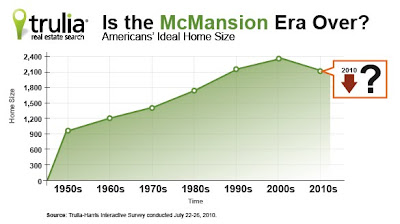
One of the 10 Cities Best Situated for Economic Recovery (Newsweek, November 2010)
One of America’s 10 Most Affordable Cities (Forbes, November 2010)
7th Smartest City in America (The Daily Beast, October 2010)
Highly ranked among 50 U.S. Real Estate Markets to Watch (PricewaterhouseCoopers, October 2010)
2nd on the Milken Institute’s Best-Performing cities 2010: Where America’s
Jobs Are Created & Sustained
(Milken Institute, October 2010)
6th Smartest City in America (CNNMoney.com, October 2010)
9th Best Graduate Program for Entrepreneurs (University of Texas at Austin) (Entrepreneur, October 2010)
12th Best Executive MBA Program (University of Texas at Austin) (Wall Street Journal, September 2010)
One of Top 10 Fall Hotspots (Travelocity, September 2010)
Among 10 metros Where You can Buy a Home for Less than $800 a month (U.S. News, September 2010)
Among America’s Most Recession Proof Cities (CNNMoney.com, September 2010)
#2 Mid-Size Metro College Destination (American Institute for Economic Research,
September 2010)
In Top 100 Cities of the Global Innovation Economy (Innovation-cities.com, September 2010)
Among Least Stressed Cities in U.S. (Portfolio.com, September 2010)
7th Most Favorable Place to Look for Work (The Conference Board, September 2010)
Among Top 20 Brainiest Cities in America (The Daily Beast, August 2010)
Top U.S. Entrepreneurial Center (Entrepreneur, August 2010)
Among America’s Best Music Cities (Travel+Leisure, August 2010)
#5 for higher education excellence (University of Texas at Austin) (Washington Monthly, August 2010)
#1 Quality of Life Metro Ranking (Business Facilities, August 2010)
#1 for Renewable Energy Availability (Business Facilities, August 2010)
#2 Greenest Metro (Business Facilities, August 2010)
#3 Top City for Young Entrepreneurs (Under30CEO, August 2010)
Top City for Young Adults (Kiplinger, July 2010)
#2 Biotech Hub (Business Facilities, July 2010)
10th Fastest-Growing Exporter in U.S. (Brookings Institute, July 2010)
5th Best City for New College Grads (Bloomberg Businessweek, July 2010)
ABIA selected as one of America’s Best Airports (Travel+Leisure, July 2010)
Round Rock among 10 Best Towns for Families (Family Circle, July 2010)
#1 Best City for the Next Decade (Kiplinger’s Personal Finance, July 2010)
One of America’s Recovery Capitals (Forbes, June 2010)
One of America’s Most Recession-Proof Cities (CNN, June 2010)
One of America’s Best Cities for Young Professionals (Forbes, June 2010)
Top City Beating the Recession (The Huffington Post, June 2010)
14 area high schools rank in the top 6% nationally (Newsweek, June 2010)
#2 Most Innovative City in America (Forbes, May 2010)
Among America’s Fittest Cities (American College of Sports Medicine, May 2010)
Among Top 10 for Best Quality of Life (Portfolio.com, May 2010)
#3 Dog Friendly City (DogFriendly.com, May 2010)
Among Cleanest Air Cities (American Lung Association, April 2010)
Best Big City for Jobs (Forbes, April 2010)
Among Top 10 Best Places to Live (Relocate America, April 2010)
Among Top 10 Best Places for Business & Careers (Forbes, April 2010)
Top 10 Destination in National Migration Trend Report (U-Haul, April 2010)
3rd among 20 Cities That Are Having an Awesome Recovery (BusinessInsider, March 2010)
One of 21 Top Time-Saving Cities (RealSimple, March 2010)
Tied for #1 City Where the Recession is Easing (Forbes, March 2010)
3rd Best City for Singles (Travel+Leisure, March 2010)
Healthiest Housing Market for 2010 (Builder, February 2010)
Williamson, Travis, & Hays Counties are Healthiest in Texas
(Robert Wood Johnson Foundation &
The University of Wisconsin Population Health
Institute, February 2010)
Best Local Music Scene (Budget Travel, February 2010)
Ranks low for Rate of Home Foreclosures (RealtyTrac, January 2010)
Most Conducive to Creation & Development of Small Businesses (Portfolio.com, January 2010)
5th Best City to Live, Work, & Make Movies (MovieMaker, January 2010)
#2 Best Place to Retire & Row in the U.S. (RowingandSculling.com, January 2010)
Best City to Invest in Commercial Real Estate (Grubb & Ellis, January 2010)
9th Easiest City to Find a Job (Juju.com, January 2010)














